spit fire from the belly but still my tongue gets tied in knots
Don't wanna be here? Send us removal request.
Text
hénr

This was on @whatareyoureallyafraidof's post where they put up this:

And I responded with this image:

and promised in the tags to elaborate if asked. And, @frodo-the-weeb, I will. But it's going to get long and I'm going to have to split it up into several reblogs.
First of all, since not everybody in the world is a Silmarillion enthusiast, let me explain what we're referring to.
One of the stories in the Silmarillion, and possibly the one Tolkien cared about the most, is the tale of Lúthien and Beren; a highly condensed version of a narrative poem called the Lay of Leithian, which Tolkien began writing in the 1930s and tried to get his publisher interested in after the success of The Hobbit.
(Their readers said no, and they tactfully asked him to focus on his Hobbit sequel instead. "The result," in Tolkien's own words, "was The Lord of the Rings.")
The skeleton of The Lay of Leithian is as follows; I'm intentionally leaving out a bunch of information that weaves it into the overarching story of the Silmarillion but isn't relevant to the thesis I'm advancing here.
Lúthien, an Elven princess and enchantress, falls in love with a mortal man, a ranger called Beren. Her father, the Elven King Thingol, disapproves and sends him Beren off to fetch one of the jewels from the crown of the Dark Lord Morgoth. Lúthien tries to join Beren but her father imprisons her in a tower to stop her, only it's actually a treehouse because they're forest elves. Lúthien magically grows her hair long and uses it to escape. By the time she catches up with Beren he is chained in the dungeons of Morgoth's second-in-command, Thû (whom Tolkien later renamed Sauron). She rescues him with the help only of a dog, who defeats Thû himself in single combat. They then live in the forest together for quite some time, but Beren feels bad about being the reason she can't go home to her family, and still intends to finish his mission and get the jewel. He leaves one morning while she's still asleep, so as not to put her in danger, and then when he's on the threshold of Morgoth's underground fortress in the far North of Middle-Earth she catches up with him again and he accepts that she's not going to be put off. Together they enter Morgoth's fortress and make their way to his throne room. They are in disguise but Morgoth is not fooled and uncovers Lúthien in front of everyone, declaring his intention to make her one of his many slaves. Lúthien offers to sing and dance for him, which is the way she works her magic. She puts everyone in the throne room to sleep, including both Beren and eventually Morgoth. She wakes Beren and he takes the jewel and they flee, but as they get to the outer door they are stopped by Morgoth's guard-wolf, who bites off Beren's hand holding the jewel.
That's as far as Tolkien ever got with the poem, but we have the synopsis in the prose Silmarillion to tell us the rest of the story; again cutting it down to the quick, Thingol accepts Beren as his son-in-law, Morgoth's guard-wolf attacks Doriath, Beren goes and hunts it but is mortally wounded, his spirit goes to the Halls of Waiting in the Undying Lands where the dead in Middle-Earth go, Lúthien also goes there and, again through her magical song, persuades Mandos the god of the dead to let him come back. Mandos offers her a choice: live on immortally as an Elf without Beren, or return to Middle-Earth with Beren but both of them will grow old and die. She chooses the latter.
Tolkien created Lúthien as a portrait of his wife Edith, which makes Beren a picture of himself. We know this for a fact because he had LUTHIEN written on her grave when she died, and when he joined her in it two years later the name BEREN was written for him:

Now on the lower right side of my response image you'll see Pauline Baynes' illustration of the Lady in the Green Kirtle from The Silver Chair, one of C. S. Lewis's Narnia stories. A quick synopsis of the Lady of the Green Kirtle's part in the story:
The Lady is a witch who rules a gloomy kingdom underneath Narnia, accessible through a fissure in the earth in an old ruined city far to the North. Before the story opens she has enspelled and kidnapped King Caspian's son Prince Rilian, whom she intends to send leading an army to conquer Narnia in her name. For twenty-three hours a day he is her willing slave and lap-dog; to maintain the spell, he must be bound to the titular silver chair for the remaining hour, during which he is sane and aware of his imprisonment. The protagonists, Eustace and Jill and their guide Puddleglum, meet her and Rilian unawares on their journey to the North; she sends them astray and almost succeeds in getting them eaten by giants. Eventually they rescue Rilian from the chair, but she sings a magical song which very nearly puts them all to sleep but for Puddleglum's intervention. Foiled, she transforms into a serpent, attacks them, and they kill her.
It is my contention that the Lady in the Green Kirtle is Lewis's caricature of Lúthien, with the enslaved and befuddled Prince Rilian representing Beren; and further, that Lewis knew or recognised that Lúthien and Beren were a literary portrait of the Tolkiens, so that The Silver Chair is ultimately a nasty commentary on their marriage.
In forthcoming reblogs I will lay out my evidence for this thesis.
7K notes
·
View notes
Text

Commander Shepard was born April 11th, 2154. Happy birthday, Commander 🎉🎉
618 notes
·
View notes
Text
me holding a gun to a mushroom: tell me the name of god you fungal piece of shit
mushroom: can you feel your heart burning? can you feel the struggle within? the fear within me is beyond anything your soul can make. you cannot kill me in a way that matters
me cocking the gun, tears streaming down my face: I’M NOT FUCKING SCARED OF YOU
785K notes
·
View notes
Text
19 thousand notes and not one taking the opportunity to
Marrowhark
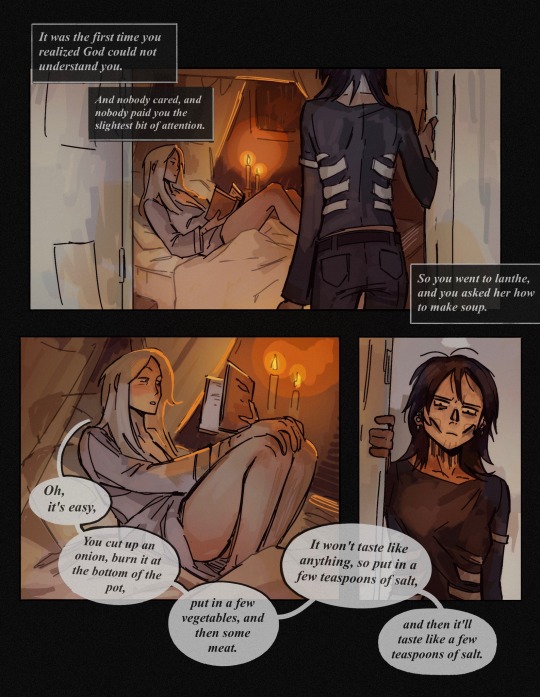
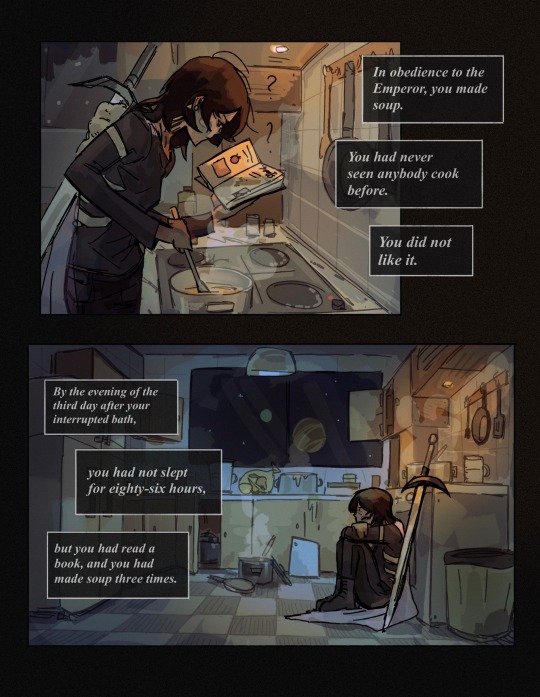

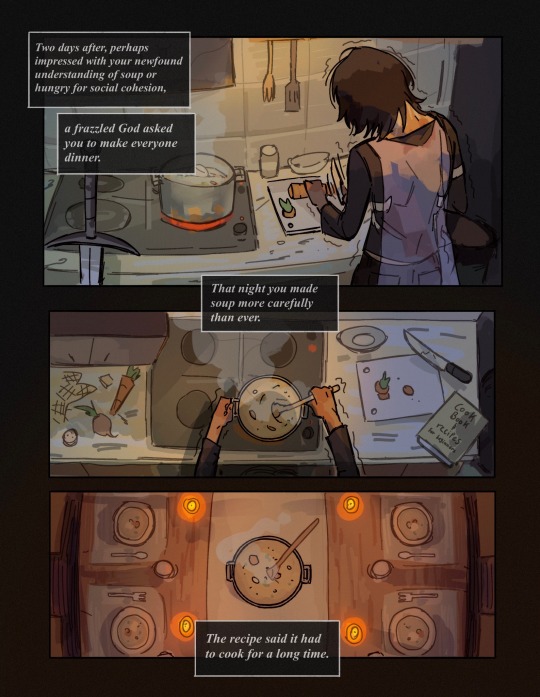
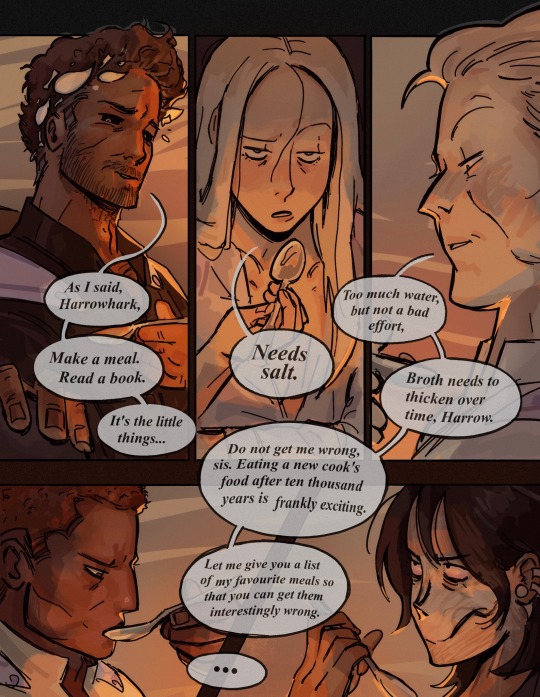


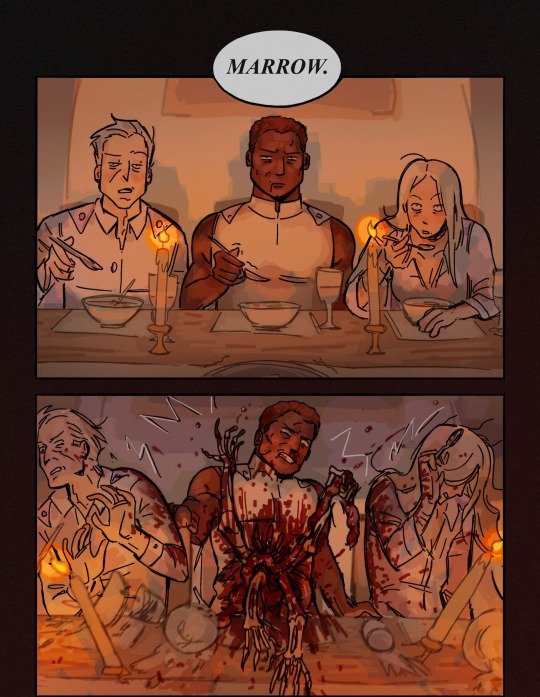
harrow soup comic! harrow soup comic!
took some creative liberties with the structure of it all otherwise it would've been 20 pages long... love u tazmuir and all your words but i removed some for my sake... enjoy...
21K notes
·
View notes
Text
Y'all need to see this omfg this is so good holy shit I'm so normal about this
3K notes
·
View notes
Text
@hawkellion I think this is content you'd enjoy

Oh come on lady, you can't deny a man his gaycation
87K notes
·
View notes
Text
ezt a beszélgetést pár évente le kell játszanom
close enough, de továbbra sem én vagyok
főleg mert sose volt ilyen magas szárú bakancsom

9K notes
·
View notes
Text
I'm sorry, but you can't leave out the Hungarian "a halál faszán", meaning "on death's dick"
there's this word in Serbian 'vukojebina' which literally means 'the place where wolves go to fuck' but they use it to mean 'in the middle of nowhere'. it sure does the job well, but the visual stayed with me longer than I would have liked it to.
23K notes
·
View notes
Text
scars in fiction: I got this trying to save my lover from an assassin- but tragically, I was too late. now I carry the mark of my failure with me always, and I can never forget~
scars in real life: so I was trying to open macaroni sauce with a paring knife
#vaccination#playground swing#water slide#underwater metal pole#idiot classmate pushing me on asphalt#me being an idiot#me being an idiot again#and again
247K notes
·
View notes
Text
everyone living in EU - please support the citizens initiative for safe and accessible abortion!!
22K notes
·
View notes
Text
az izlandi nemzetiségi sagák átmenetéről a szóbeliségből az írásbeliségbe (BA), meg a lovagi sagák szerepéről a 14. századi izlandi identitásképzésben (MA)
Ilyenkor mindig eszembe jut a saját érettségim. Apám éppen akkor bénult le féloldalára, a továbbtanulási terveimet el kellett engednem.
Viszont őszintén érdekel, akik eljutottak odáig, miből írtátok a szakdogátokat?
276 notes
·
View notes
Text
A Guide to Historically Accurate Regency-Era Names

I recently received a message from a historical romance writer asking if I knew any good resources for finding historically accurate Regency-era names for their characters.
Not knowing any off the top of my head, I dug around online a bit and found there really isn’t much out there. The vast majority of search results were Buzzfeed-style listicles which range from accurate-adjacent to really, really, really bad.
I did find a few blog posts with fairly decent name lists, but noticed that even these have very little indication as to each name’s relative popularity as those statistical breakdowns really don't exist.
I began writing up a response with this information, but then I (being a research addict who was currently snowed in after a blizzard) thought hey - if there aren’t any good resources out there why not make one myself?
As I lacked any compiled data to work from, I had to do my own data wrangling on this project. Due to this fact, I limited the scope to what I thought would be the most useful for writers who focus on this era, namely - people of a marriageable age living in the wealthiest areas of London.
So with this in mind - I went through period records and compiled the names of 25,000 couples who were married in the City of Westminster (which includes Mayfair, St. James and Hyde Park) between 1804 to 1821.
So let’s see what all that data tells us…
To begin - I think it’s hard for us in the modern world with our wide and varied abundance of first names to conceive of just how POPULAR popular names of the past were.
If you were to take a modern sample of 25-year-old (born in 1998) American women, the most common name would be Emily with 1.35% of the total population. If you were to add the next four most popular names (Hannah, Samantha, Sarah and Ashley) these top five names would bring you to 5.5% of the total population. (source: Social Security Administration)
If you were to do the same survey in Regency London - the most common name would be Mary with 19.2% of the population. Add the next four most popular names (Elizabeth, Ann, Sarah and Jane) and with just 5 names you would have covered 62% of all women.
To hit 62% of the population in the modern survey it would take the top 400 names.
The top five Regency men’s names (John, William, Thomas, James and George) have nearly identical statistics as the women’s names.
I struggled for the better part of a week with how to present my findings, as a big list in alphabetical order really fails to get across the popularity factor and also isn’t the most tumblr-compatible format. And then my YouTube homepage recommended a random video of someone ranking all the books they’d read last year - and so I present…
The Regency Name Popularity Tier List
The Tiers
S+ - 10% of the population or greater. There is no modern equivalent to this level of popularity. 52% of the population had one of these 7 names.
S - 2-10%. There is still no modern equivalent to this level of popularity. Names in this percentage range in the past have included Mary and William in the 1880s and Jennifer in the late 1970s (topped out at 4%).
A - 1-2%. The top five modern names usually fall in this range. Kids with these names would probably include their last initial in class to avoid confusion. (1998 examples: Emily, Sarah, Ashley, Michael, Christopher, Brandon.)
B - .3-1%. Very common names. Would fall in the top 50 modern names. You would most likely know at least 1 person with these names. (1998 examples: Jessica, Megan, Allison, Justin, Ryan, Eric)
C - .17-.3%. Common names. Would fall in the modern top 100. You would probably know someone with these names, or at least know of them. (1998 examples: Chloe, Grace, Vanessa, Sean, Spencer, Seth)
D - .06-.17%. Less common names. In the modern top 250. You may not personally know someone with these names, but you’re aware of them. (1998 examples: Faith, Cassidy, Summer, Griffin, Dustin, Colby)
E - .02-.06%. Uncommon names. You’re aware these are names, but they are not common. Unusual enough they may be remarked upon. (1998 examples: Calista, Skye, Precious, Fabian, Justice, Lorenzo)
F - .01-.02%. Rare names. You may have heard of these names, but you probably don’t know anyone with one. Extremely unusual, and would likely be remarked upon. (1998 examples: Emerald, Lourdes, Serenity, Dario, Tavian, Adonis)
G - Very rare names. There are only a handful of people with these names in the entire country. You’ve never met anyone with this name.
H - Virtually non-existent. Names that theoretically could have existed in the Regency period (their original source pre-dates the early 19th century) but I found fewer than five (and often no) period examples of them being used in Regency England. (Example names taken from romance novels and online Regency name lists.)
Just to once again reinforce how POPULAR popular names were before we get to the tier lists - statistically, in a ballroom of 100 people in Regency London: 80 would have names from tiers S+/S. An additional 15 people would have names from tiers A/B and C. 4 of the remaining 5 would have names from D/E. Only one would have a name from below tier E.
Women's Names
S+ Mary, Elizabeth, Ann, Sarah
S - Jane, Mary Ann+, Hannah, Susannah, Margaret, Catherine, Martha, Charlotte, Maria
A - Frances, Harriet, Sophia, Eleanor, Rebecca
B - Alice, Amelia, Bridget~, Caroline, Eliza, Esther, Isabella, Louisa, Lucy, Lydia, Phoebe, Rachel, Susan
C - Ellen, Fanny*, Grace, Henrietta, Hester, Jemima, Matilda, Priscilla
D - Abigail, Agnes, Amy, Augusta, Barbara, Betsy*, Betty*, Cecilia, Christiana, Clarissa, Deborah, Diana, Dinah, Dorothy, Emily, Emma, Georgiana, Helen, Janet^, Joanna, Johanna, Judith, Julia, Kezia, Kitty*, Letitia, Nancy*, Ruth, Winifred>
E - Arabella, Celia, Charity, Clara, Cordelia, Dorcas, Eve, Georgina, Honor, Honora, Jennet^, Jessie*^, Joan, Joyce, Juliana, Juliet, Lavinia, Leah, Margery, Marian, Marianne, Marie, Mercy, Miriam, Naomi, Patience, Penelope, Philadelphia, Phillis, Prudence, Rhoda, Rosanna, Rose, Rosetta, Rosina, Sabina, Selina, Sylvia, Theodosia, Theresa
F - (selected) Alicia, Bethia, Euphemia, Frederica, Helena, Leonora, Mariana, Millicent, Mirah, Olivia, Philippa, Rosamund, Sybella, Tabitha, Temperance, Theophila, Thomasin, Tryphena, Ursula, Virtue, Wilhelmina
G - (selected) Adelaide, Alethia, Angelina, Cassandra, Cherry, Constance, Delilah, Dorinda, Drusilla, Eva, Happy, Jessica, Josephine, Laura, Minerva, Octavia, Parthenia, Theodora, Violet, Zipporah
H - Alberta, Alexandra, Amber, Ashley, Calliope, Calpurnia, Chloe, Cressida, Cynthia, Daisy, Daphne, Elaine, Eloise, Estella, Lilian, Lilias, Francesca, Gabriella, Genevieve, Gwendoline, Hermione, Hyacinth, Inez, Iris, Kathleen, Madeline, Maude, Melody, Portia, Seabright, Seraphina, Sienna, Verity
Men's Names
S+ John, William, Thomas
S - James, George, Joseph, Richard, Robert, Charles, Henry, Edward, Samuel
A - Benjamin, (Mother’s/Grandmother’s maiden name used as first name)#
B - Alexander^, Andrew, Daniel, David>, Edmund, Francis, Frederick, Isaac, Matthew, Michael, Patrick~, Peter, Philip, Stephen, Timothy
C - Abraham, Anthony, Christopher, Hugh>, Jeremiah, Jonathan, Nathaniel, Walter
D - Adam, Arthur, Bartholomew, Cornelius, Dennis, Evan>, Jacob, Job, Josiah, Joshua, Lawrence, Lewis, Luke, Mark, Martin, Moses, Nicholas, Owen>, Paul, Ralph, Simon
E - Aaron, Alfred, Allen, Ambrose, Amos, Archibald, Augustin, Augustus, Barnard, Barney, Bernard, Bryan, Caleb, Christian, Clement, Colin, Duncan^, Ebenezer, Edwin, Emanuel, Felix, Gabriel, Gerard, Gilbert, Giles, Griffith, Harry*, Herbert, Humphrey, Israel, Jabez, Jesse, Joel, Jonas, Lancelot, Matthias, Maurice, Miles, Oliver, Rees, Reuben, Roger, Rowland, Solomon, Theophilus, Valentine, Zachariah
F - (selected) Abel, Barnabus, Benedict, Connor, Elijah, Ernest, Gideon, Godfrey, Gregory, Hector, Horace, Horatio, Isaiah, Jasper, Levi, Marmaduke, Noah, Percival, Shadrach, Vincent
G - (selected) Albion, Darius, Christmas, Cleophas, Enoch, Ethelbert, Gavin, Griffin, Hercules, Hugo, Innocent, Justin, Maximilian, Methuselah, Peregrine, Phineas, Roland, Sebastian, Sylvester, Theodore, Titus, Zephaniah
H - Albinus, Americus, Cassian, Dominic, Eric, Milo, Rollo, Trevor, Tristan, Waldo, Xavier
# Men were sometimes given a family surname (most often their mother's or grandmother's maiden name) as their first name - the most famous example of this being Fitzwilliam Darcy. If you were to combine all surname-based first names as a single 'name' this is where the practice would rank.
*Rank as a given name, not a nickname
+If you count Mary Ann as a separate name from Mary - Mary would remain in S+ even without the Mary Anns included
~Primarily used by people of Irish descent
^Primarily used by people of Scottish descent
>Primarily used by people of Welsh descent
I was going to continue on and write about why Regency-era first names were so uniform, discuss historically accurate surnames, nicknames, and include a little guide to finding 'unique' names that are still historically accurate - but this post is already very, very long, so that will have to wait for a later date.
If anyone has any questions/comments/clarifications in the meantime feel free to message me.
Methodology notes: All data is from marriage records covering six parishes in the City of Westminster between 1804 and 1821. The total sample size was 50,950 individuals.
I chose marriage records rather than births/baptisms as I wanted to focus on individuals who were adults during the Regency era rather than newborns. I think many people make the mistake when researching historical names by using baby name data for the year their story takes place rather than 20 to 30 years prior, and I wanted to avoid that. If you are writing a story that takes place in 1930 you don’t want to research the top names for 1930, you need to be looking at 1910 or earlier if you are naming adult characters.
I combined (for my own sanity) names that are pronounced identically but have minor spelling differences: i.e. the data for Catherine also includes Catharines and Katherines, Susannah includes Susannas, Phoebe includes Phebes, etc.
The compound 'Mother's/Grandmother's maiden name used as first name' designation is an educated guesstimate based on what I recognized as known surnames, as I do not hate myself enough to go through 25,000+ individuals and confirm their mother's maiden names. So if the tally includes any individuals who just happened to be named Fitzroy/Hastings/Townsend/etc. because their parents liked the sound of it and not due to any familial relations - my bad.
I did a small comparative survey of 5,000 individuals in several rural communities in Rutland and Staffordshire (chosen because they had the cleanest data I could find and I was lazy) to see if there were any significant differences between urban and rural naming practices and found the results to be very similar. The most noticeable difference I observed was that the S+ tier names were even MORE popular in rural areas than in London. In Rutland between 1810 and 1820 Elizabeths comprised 21.4% of all brides vs. 15.3% in the London survey. All other S+ names also saw increases of between 1% and 6%. I also observed that the rural communities I surveyed saw a small, but noticeable and fairly consistent, increase in the use of names with Biblical origins.
Sources of the records I used for my survey:
Ancestry.com. England & Wales Marriages, 1538-1988 [database on-line].
Ancestry.com. Westminster, London, England, Church of England Marriages and Banns, 1754-1935 [database on-line].
13K notes
·
View notes
Text
miért van az, hogy az élmények ennyire kibaszott fárasztóak
8 notes
·
View notes
Text
neat
Change a single letter and change the word game
I want to play a game with you all.
You have to make a new word by changing only one letter of the last word.
Dirt
148K notes
·
View notes
Photo

ez több okból is a K-Ny-i (2-es, piros) vonal:
1970-ben még csak az volt kész, az É-D (3-as, kék) vonal építése abban az évben kezdődött
az utastéri világítás lámpatestjei az első Magyarországra érkezett Ev motorkocsik úgynevezett "cicilámpái" (eredeti típusjelzés szerint Ев, a в/v Magyarországra utal, ezek Budapesten 100-as kezdetű pályaszámmal futottak)

Subway car, Budapest, 1970. From the Budapest Municipal Photography Company archive.
448 notes
·
View notes
